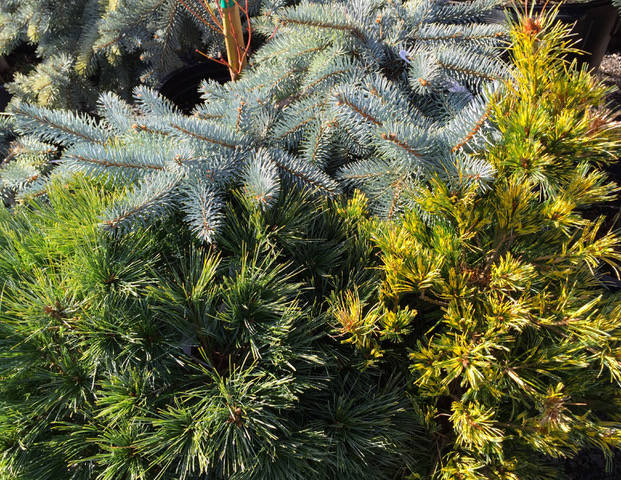By Steve Smith
Nursery professionals tend to use words that can sometimes be confusing. Here is some insight into this jargon so that on your next garden center visit you can be more efficient with your time and feel more intelligent.
•A typical garden center sells all kinds of plants that usually include annuals, perennials, evergreen and deciduous woody shrubs, and vines and ground covers. It may not always be obvious which is which or how to use them in our gardens. Probably the most common plant in the Northwest is what we refer to as an evergreen. For most gardeners the word “pine” immediately comes to mind, and that is fine except that most evergreens on the west side of the mountains are either firs, hemlocks or cedars. Add to that group all the exotic varieties of evergreens – like cypress, juniper, spruce, cryptomeria, sequoia, thujopsis and sciadopytes – and it can get confusing. All you need to remember is that these are what garden centers refer to as needle-leafed evergreens or conifers. They are mostly trees but can also be shrubs, or even low-growing ground covers. •The other typical type of evergreen is what we call a “broadleaf.” It is usually a shrub like a rhododendron, azalea or camellia, but could also be a small tree like holly or English Laurel. The leaves are broad, rather than needle-like, and will usually grow in either full sun or shade. They are very adaptable and great in many different garden or landscape spaces.
•Annuals are plants that sprout from seed, grow, flower, set seed and then die, all in one season. While that is technically true, there are many kinds of plants that we as gardeners treat as “annuals” and enjoy for one season and then part company. Geraniums for example will grow into a hedge down in Southern California where I grew up, but in the Northwest we treat them as a seasonal pleasure. Even woody shrubs like lantana or bougainvillea can be used as annuals here and then relegated to the compost pile at the end of the season. Some of you may recall me referring to that behavior as a summer love affair. Annuals have many uses but are perfect for adding vibrant pops of color in containers on patios and porches.
•Perennials are plants that come back every year (at least they are supposed to) and usually disappear for the winter. They can be ground huggers or 6-feet tall giants, shade lovers or sun hoggers, moisture needers or drought requirers and some even can be evergreen and never die back in the winter at all. In other words, they come in all shapes and sizes and can provide us with endless hours of entertainment. Perennials are perfect for creating interesting, colorful, ever-changing garden beds.
•Finally, vines are plants that will climb up a tree or trellis and form a vertical accent in the garden. They can be either evergreen or deciduous, perennial or annual, shade or sun loving, and are a wonderful addition to any garden. They are particularly great for growing on (or covering) fences, arbors or trellises. Hopefully some insights have been gained on these different plant categories, and you’ll feel more confident when perusing for your gardening needs this year.
Steve Smith is the owner of Sunnyside Nursery in Marysville. He writes a column that runs each week online and periodically in the newspaper.
P.S. – Sunnyside will be hosting two free classes Feb. 2 at 10 a.m. or Feb. 3 at 11 a.m. on “Fresh Backyard Berries.” For details go to www.sunnysidenursery.net


